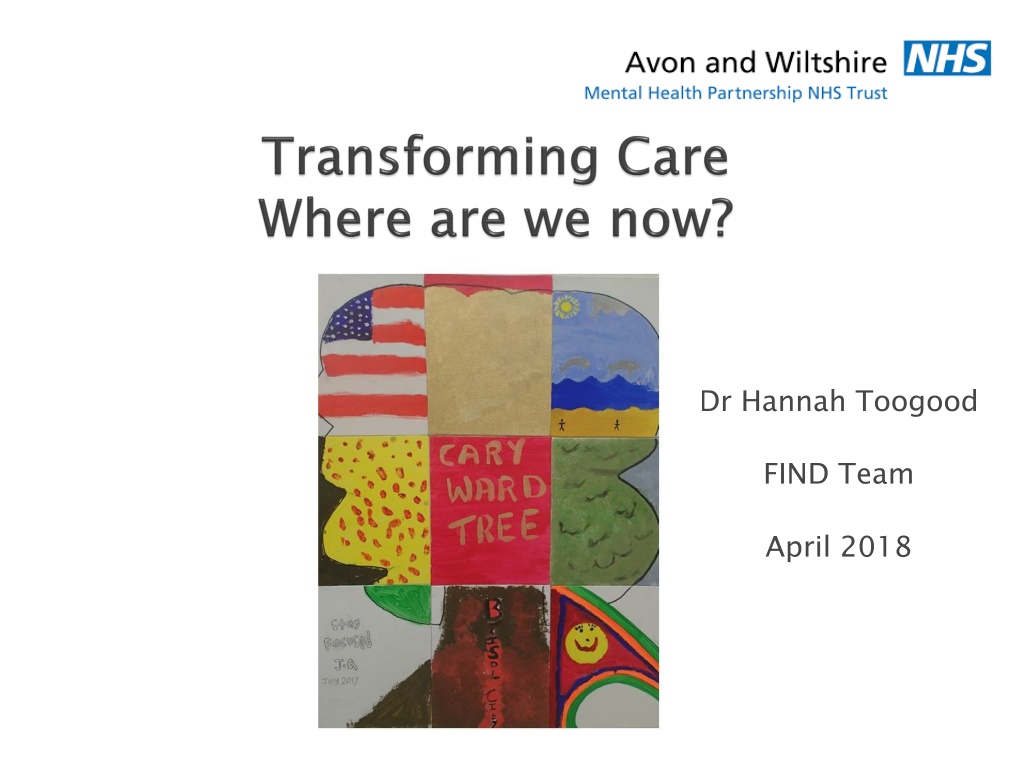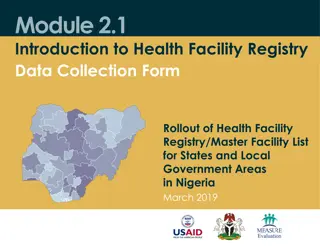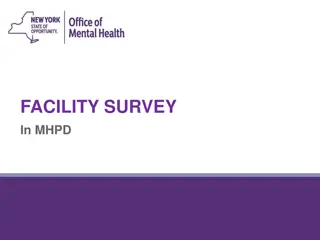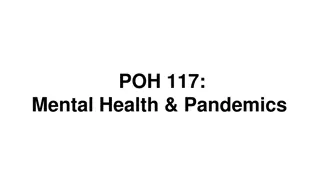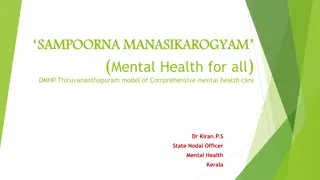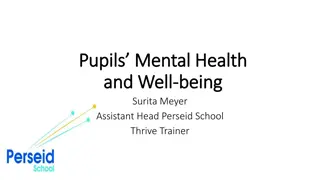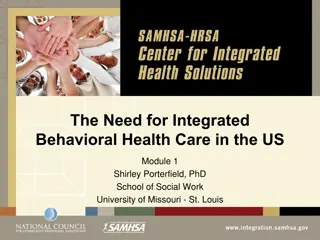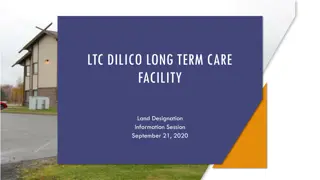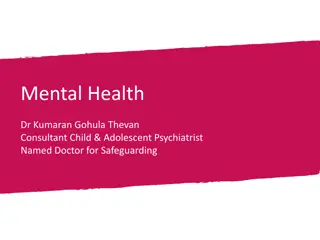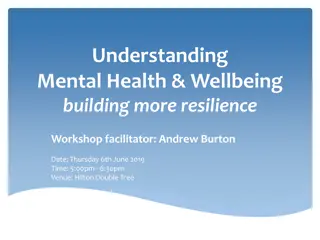Insight into Mental Health Care Facility Operations and Patient Demographics
Dr. Hannah Toogood leads the FIND Team as of April 2018, managing patient admissions and care in a psychiatric hospital. The facility houses a diverse patient population with various diagnoses, majority having multiple major conditions. A significant percentage have experienced trauma and were formerly in state care. The patients exhibit a range of behaviors and are often referred from the courts or prisons. Transition and discharge planning are actively ongoing for many patients.
Download Presentation

Please find below an Image/Link to download the presentation.
The content on the website is provided AS IS for your information and personal use only. It may not be sold, licensed, or shared on other websites without obtaining consent from the author. Download presentation by click this link. If you encounter any issues during the download, it is possible that the publisher has removed the file from their server.
E N D
Presentation Transcript
Dr Hannah Toogood FIND Team April 2018
Who is in hospital currently? Who is getting admitted? What works (and what doesn t)?
High High Medium M - 8 3 2 Medium Low Low Total Total Gender B&NES Bristol Glos North Somerset Somerset South Glos Swindon Wiltshire Total M - 1 - - F - - - - F - 1 1 - M 1 6 9 3 F - - 2 - 1 1 16 15 5 5 16 15 - - - - 1 1 - - - - - - 4 1 3 1 2 - - - 4 4 2 2 - 1 1 - - 1 4 4 9 9 3 3 3 3 3 3 55 55 Total 22 22 24 24 Plus 4 awaiting beds.
8 specialist beds in Bristol 5 in mainstream services within region
10 have been in secure hospitals for 5-10 years. 4 for more than 10 years. 9 have never lived in the community as adults.
Majority have at least two different major diagnoses. 56% have LD, of those: 29% also have ASD 35% also have a personality disorder 29% also have a serious mental illness 29% have a combination of two of these and LD Plus ADHD
LD only ASD only LD and ASD LD and MI ASD and MI LD and PD ASD and PD LD, ASD and MI LD, MI and PD LD, ASD and PD ASD, MI and PD
62% have documented histories of severe trauma. 40% were looked after children .
Fire Fire Violence Violence Sex Sex 2 2 of these 33% of All All 3 3 these 29% 87% 36% 11% 82% sent to hospital by the Courts or via prison transfer.
40% are currently involved in active transition work/discharge planning.
7 admissions 4 from the Courts/prison: Murder Violence with weapons Multiple child sex offences. 3 from other hospital settings: 2 failed step-downs to locked rehab 1 from open acute ward with charges pending.
10 discharges 7 to the community (4 direct from medium secure care). 1 to prison 2 to locked rehab (both from medium secure care).
Gatekeeping and alternatives to admission Effective, high quality care Discharge planning
Specialist multidisciplinary gatekeeping of all referrals. Effective use of Blue Light meetings and CTRs. Offering alternatives to admission. Close working relationships.
Personalised. Start prior to admission. Based on a detailed understanding of needs. Collaborative service users and families/carers. With clear direction and markers of progress. Overseen by specialists. Strategic use of mainstream services.
Active MDT working with high levels of involvement from consistent skilled community professionals. Work on independence skills. Building hope for the future. Identifying and addressing blocks to progress: Difficulties with engagement External review when things feel stuck .
Knowing our service users well. Building relationships and ensuring good communication. Asking lots of questions. Clear expectations.
Low secure specialist beds within region. Assessment beds: Focused 3 month MDT assessments. Is hospital necessary? Are there any safe and appropriate alternatives? Transition beds: Designed specifically to provide a base for transition back to the community for people from out of area hospitals.
Always thinking about discharge planning. Working closely with other agencies, service users, families and carers. Addressing barriers early. Can this treatment be provided safely in the community? CTRs and life planning.
Highly skilled community providers. Instilling hope and self-belief. Building relationships. Working collaboratively, trying things out and learning together.
On Care provider Community health team Community social care Work with families Communication On- -going high quality care: going high quality care: Effective and responsive crisis and contingency planning: Police Liaison and Diversion Services Intensive and Inpatient mental health services Forensic services Blue light and MAPPA meetings. Effective and responsive crisis and contingency planning:
